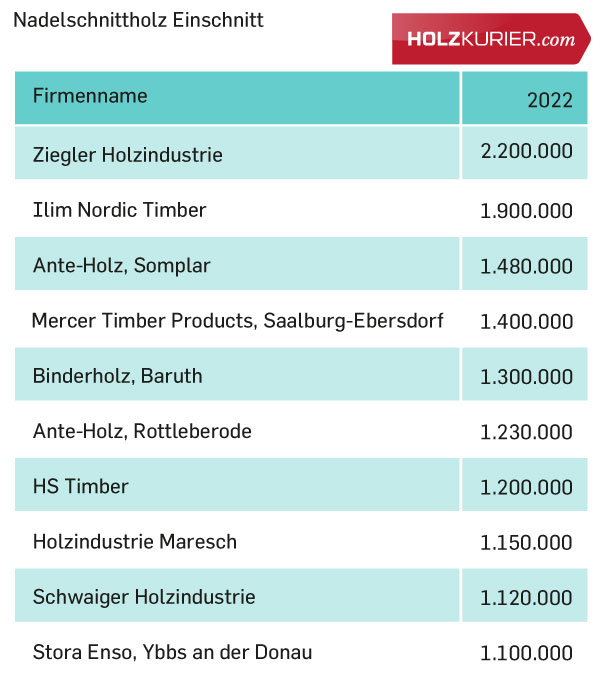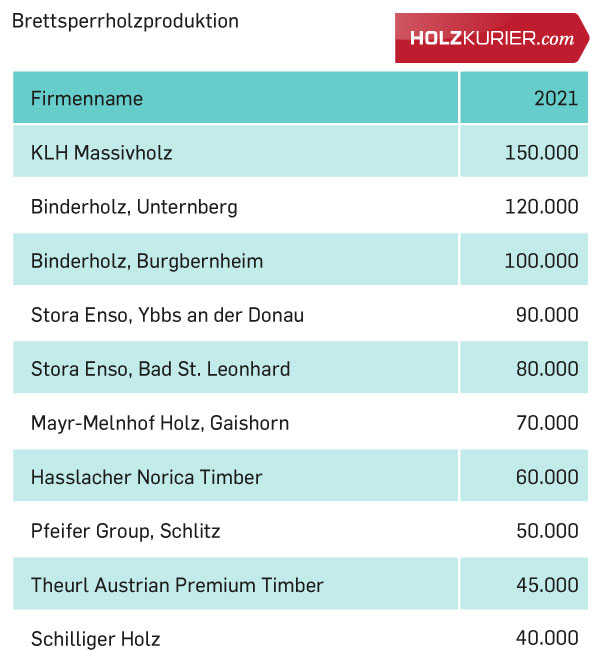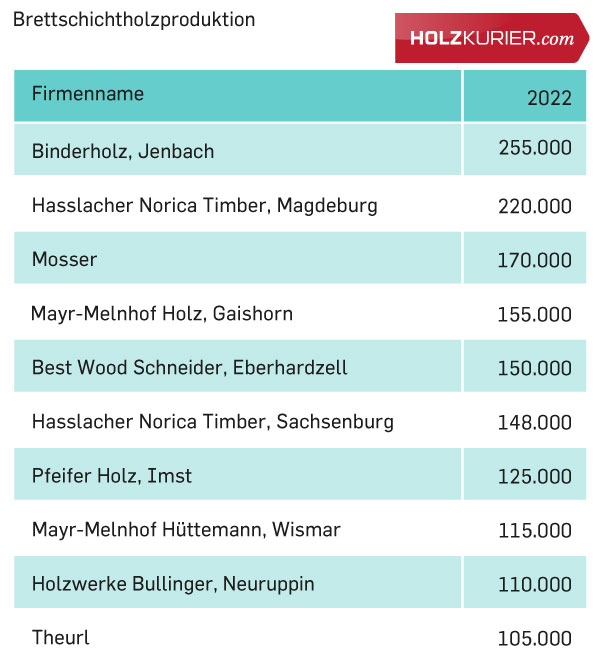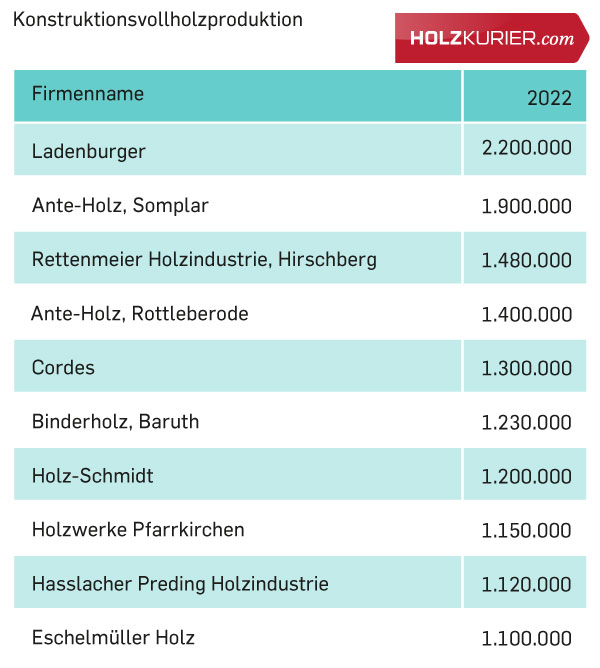Solid Wood
Unsurpassed availability for extreme requirements
In the solid wood industry, an extraction system must meet the highest requirements. Very large quantities of dust and chips occur. This is combined with multi-shift work and high processing speeds. Smooth, continuous operation must always be guaranteed despite these high machine loads.
Thanks to decades of experience, Scheuch LIGNO knows the requirements of the solid wood industry very well. Scheuch LIGNO therefore offers the optimum solution for any challenge. Numerous renowned companies and market leaders in the sold wood industry trust the Scheuch LIGNO innovative extraction systems and therefore always achieve maximum productivity.
Protection for employees, machines and the environment – limit values for dust are complied with reliably
The limit values for the allowable dust pollution in sawing lines are quickly exceeded. To get this problem under control, Scheuch LIGNO offers each customer a complete individual solution which incorporates the company’s many years of experience in ventilation.
Maintenance and cleaning expenditure is reduced
Excessive levels of dust in sawmills lead to higher maintenance and cleaning expenditure on the machines and in the hall, as well as an increased danger of fire and explosion. The increased dust pollution can cause serious health problems for employees. To comply with the statutory worker protection regulations, an appropriately-sized dedusting system must be installed in sawing lines. Compliance with the prescribed limit values is increasingly being checked by worker protection institutes.
Dust proportion of just a few mg/m³ in the sawmill hall
Scheuch LIGNO has been a specialist in extraction technology for decades and has installed a large number of dedusting systems in sawmills. These systems ensure that a dust proportion of just a few mg/m³ in the sawmill hall is complied with reliably. In order to achieve very low values, the entire sawing line including the conveyance routes and mitre saws must be dedusted and the system must be considered as a whole.
Close cooperation between the manufacturer, owner and extraction technician
Comprehensive expertise and many years of experience are required to ensure optimum dedusting on a sawing line. The sawing line manufacturer, the owner and the extraction technician must therefore cooperate very closely and draw on their own expert knowledge. The filter system is generally arranged so that a central return for the wood dust and the sawdust into the sawing line disposal system is ensured.
Particularly clean return air with less than 0.1 mg/nm³
The air return is also very important in sawing line dedusting. Axial fans, fresh air dampers and an air distribution system are installed in the hall for this. The particularly clean return air with less than 0.1 mg/nm³ and the fresh air are therefore guided towards the sawing line. The airflow reduces dust dissipation in the hall further. A sophisticated control system between the return air and the fresh air ensures an optimised climate in the hall in both summer and winter.
Here are the top 10 sawmills that are also the top 10 customers of Scheuch LIGNO in this area:
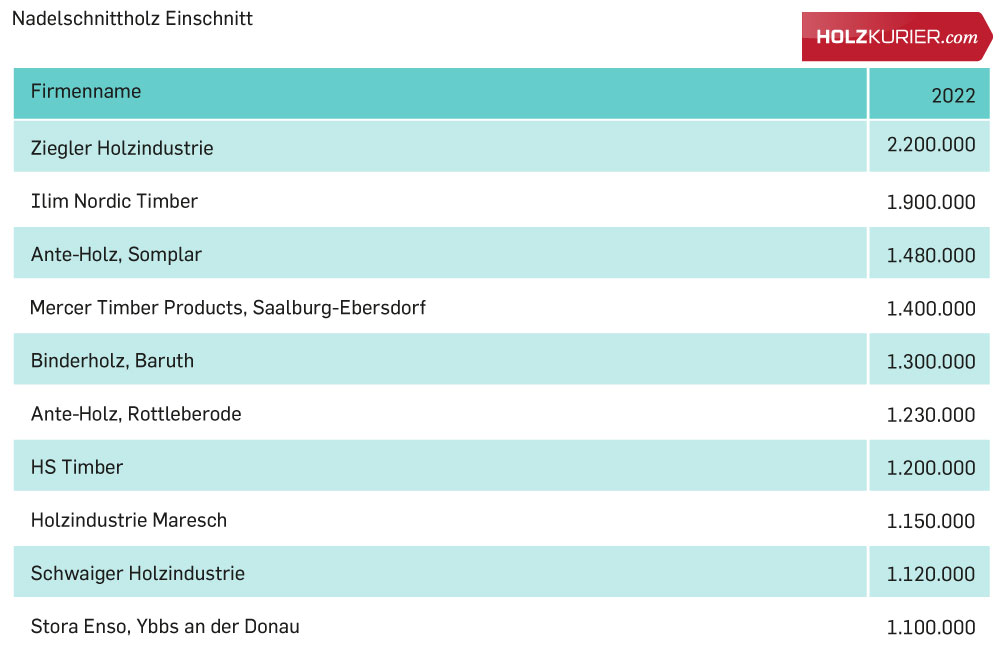
Source: Holzkurier magzine
Reliability, safety and unsurpassed availability
As an equipment supplier right from the start, Scheuch LIGNO was involved in developing the first plywood boards. Scheuch LIGNO delivered the first extraction systems to the “inventor” of plywood boards, KLH. Scheuch LIGNO was and remains the first choice equipment supplier during the subsequent fast-paced development and establishment of new capacities.
The processes when manufacturing plywood boards have different extraction requirements. The upstream processes are normally at medium air quantities continuously. The downstream processes for final processing normally required high air quantities and are very intermittent.
All manufacturing processes must be monitored using highly-sensitive sensors and controlled. Highly effective extraction is therefore required. To ensure that this works in an energy-efficient manner, the system is normally equipped with frequency converters. A SEGAS Plus excess pressure system is pressure controlled on the one hand, to ensure that constant operating flow rates can be generated and, on the other hand, is shut down in the system’s cycle breaks in order to save as much energy as possible.
With its robust design, Scheuch LIGNO meets the main requirements when it comes to reliability, safety and as close to 100 percent availability as possible, for fault-free, continuous operation around the clock.
Here are the top 10 glue-laminated timber producers that are also the top 10 customers of Scheuch LIGNO in this area:

Quelle: Holzkurier
Efficient production
Single-layer solid wood boards consist of individual 20, 30 or 50 mm wide lamellas made of softwood or hardwood, which can be finger-jointed along their length. They are glued together to form panels of different lengths and widths using adhesives of the corresponding stress groups.
As with similar products, speed and a high degree of purity are essential during production due to the high proportion of gluing steps. This is why top producers repeatedly opt for a Scheuch LIGNO extraction system.
Here are the top 10 solid wood boards that are also the top 10 customers of Scheuch LIGNO in this area:
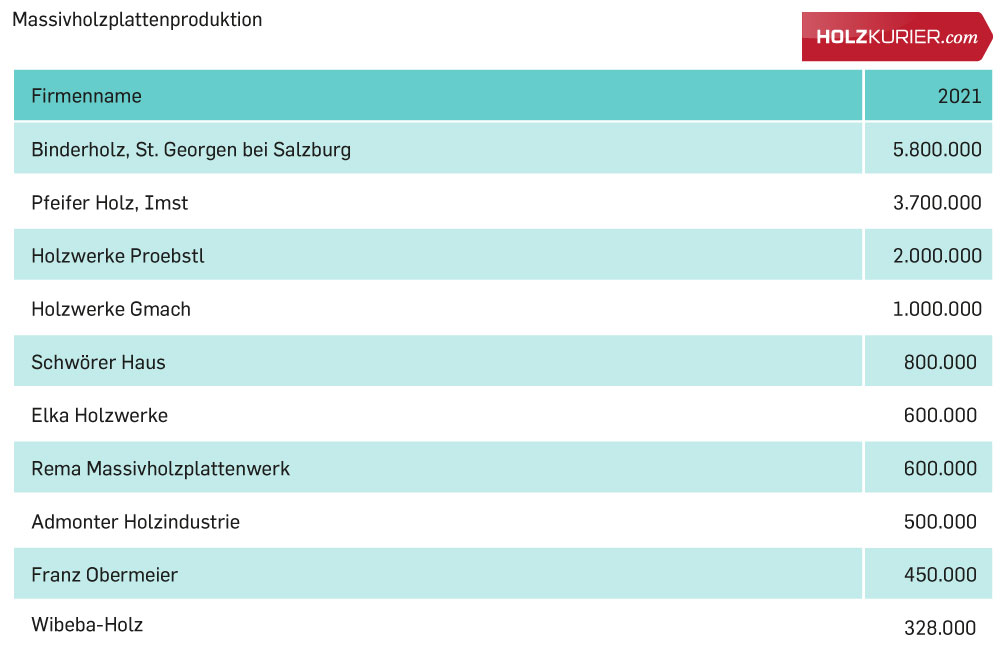
Quelle: Holzkurier
High-performance extraction systems for better gluing quality
Glued-laminated timber, also often referred to as GLT or glulam, consists of at least three boards that are glued together in the same fibre direction. The individual layers of boards are first glued together lengthwise by finger-jointing to form so-called slats. The individual board layers are then glued and planed to form timber. The multi-layered timber makes the glued-laminated timber even more dimensionally stable and achieves a very high load-bearing capacity.
Glued-laminated timber is produced from spruce, fir, pine, Douglas fir or larch wood. Speed and a high dimension of purity are essential during production due to the high proportion of gluing steps.
Scheuch LIGNO impresses with its powerful and higher quality extraction systems. The absence of dust and chips ensures good surface and gluing quality. This significantly reduces the costs for post-processing. This is why top producers repeatedly opt for a Scheuch LIGNO extraction system.
Here are the top 10 sawmills that are also the top 10 customers of Scheuch LIGNO in this area:
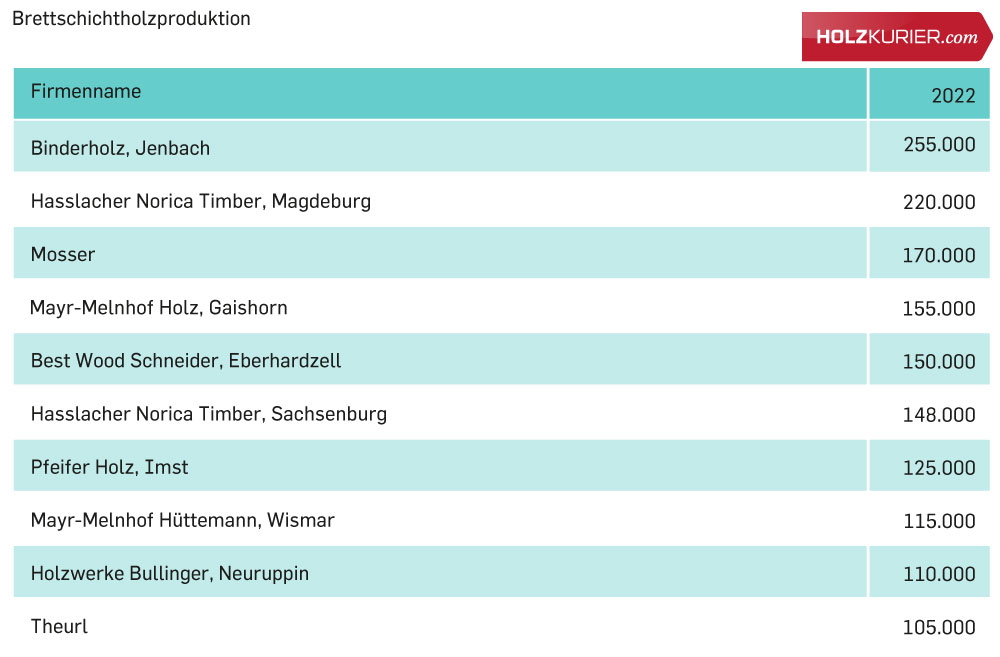
Quelle: Holzkurier
Unsurpassed availability even with very large quantities of material
The abbreviation SST stands for solid structural timber and refers to planed and dried solid wood. It is made from woods such as spruce, larch, fir, Douglas fir and pine. Speed is a key feature of production. The Scheuch LIGNO extraction systems impress with their above-average availability, even under the highest demands due to particularly large quantities of material – a clear competitive advantage for Scheuch LIGNO’s customers. And an important factor why the Who’s Who of the industry opts for Scheuch LIGNO extraction systems.
Here are the top 10 solid structural timber producers that are also the top 10 customers of Scheuch LIGNO in this area:
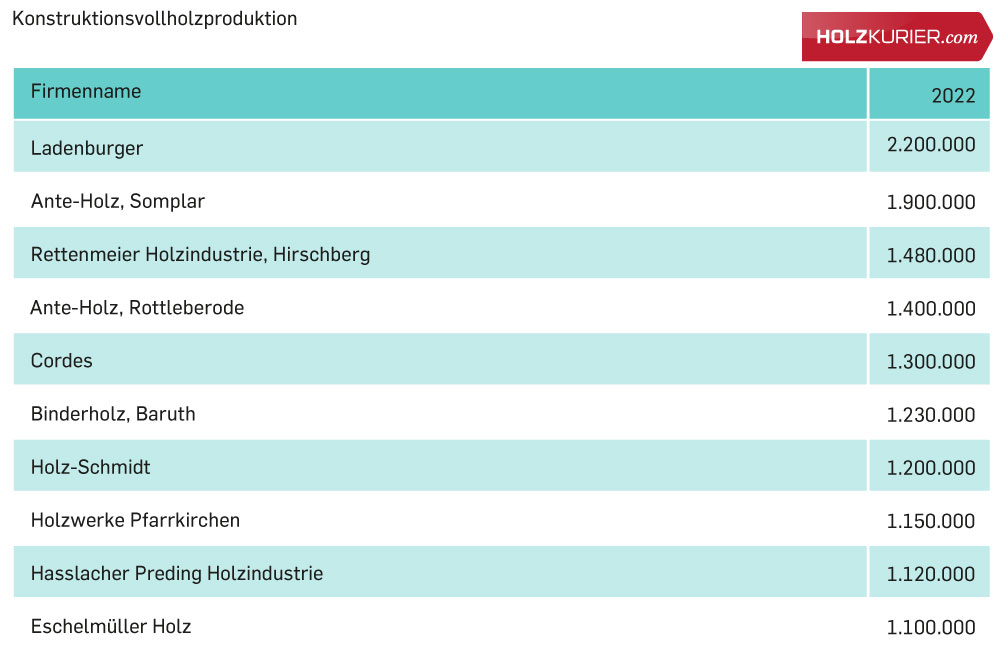
Quelle: Holzkurier
Planing mills
Robust and proven components, uncompromising planning
Scheuch LIGNO has been a reliable partner in the realisation of complete solutions in extraction technology for the planing industry for many years. When designing the systems, the focus is on uncompromising planning and, when selecting the means, on a robust and proven design of the components. Only with these principles can the high requirements in terms of reliability, safety and, if possible, 100 per cent availability for trouble-free continuous operation around the clock be achieved.
Highest requirements reliably met
The requirements for extraction systems, dedusting systems and pneumatic conveying systems in the sawmill and timber industry have become increasingly stringent over the past few years. Systems in continuous operation, huge amounts of dust and shavings as well as high processing speeds push the units used to the limit. Today, electronic controllers with the use of highly sensitive sensors place the highest demands on dedusting systems in order to avoid Operational interruptions and high dust levels at workplaces.
Whether cyclones, in-line bag filters, round filters or combinations thereof – all systems are characterised by robust and therefore reliable operation and can handle throughputs of up to 350 m³ of loose wood shavings per hour. Powerful discharge devices (rotary valves, screws), the reliable pulse cleaning system and corresponding monitoring devices guarantee trouble-free 3-shift operation.
References
Your customized solution is just one step away!
With our extensive experience, we are your reliable partner for extraction and surface technologies in industry and trade. Guided by our commitment to providing „the most economical solution for trade and industry,“ we work together to achieve the best results tailored to your needs. Simply enter your contact details, and we’ll get back to you as soon as possible.


